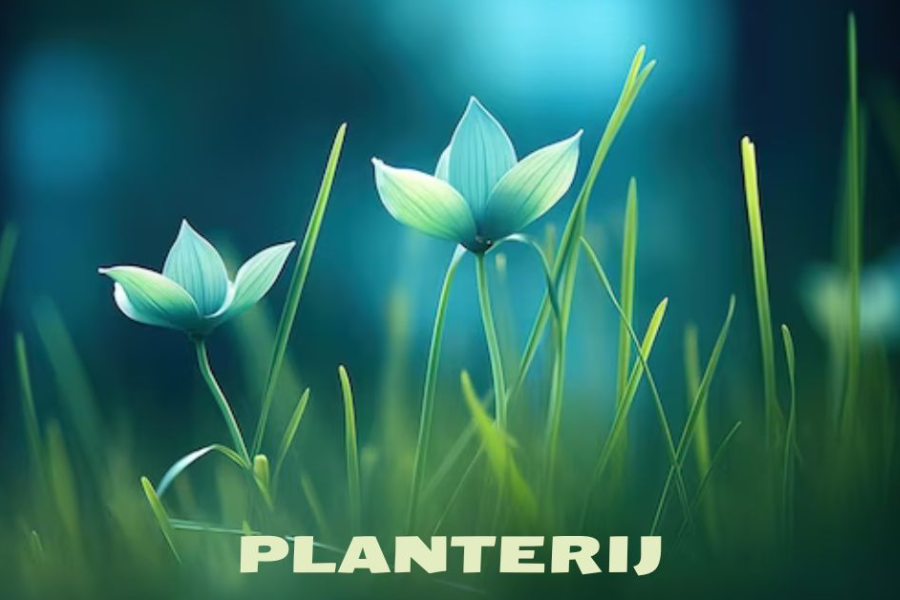Planterij: A Green Oasis of Growth and Wellness
Plants are far more than simple decorations; they are essential to the health of our environment, boost our well-being, and serve as valuable sources of food and medicine. The term “Planterij,” which refers to a space specifically designed for nurturing plants, has gained popularity among gardening enthusiasts and horticulturists globally. In this article, we’ll dive into the world of Planterij, exploring its multifaceted nature, offering tips on plant care, and revealing advanced gardening techniques to help your garden thrive.
The Foundation of Plant Growth
Photosynthesis: Fuel for Life
At the core of plant life lies photosynthesis—a natural process that enables plants to turn sunlight into energy. Chlorophyll, the pigment that gives plants their green color, absorbs light and facilitates the transformation of carbon dioxide and water into glucose and oxygen. Not only does this process sustain the plant, but it also produces the oxygen we rely on for breathing.
Nutrients and Soil: The Building Blocks
To flourish, plants require an assortment of nutrients. The three primary macronutrients include nitrogen (N), phosphorus (P), and potassium (K), but plants also need micronutrients like calcium, magnesium, and iron. The composition of soil is key to delivering these nutrients. Well-draining, nutrient-rich soil with a balanced pH level promotes healthy plant growth. Adding organic materials such as compost can enhance soil structure and boost nutrient availability.
Watering and Drainage: Striking the Right Balance
Effective watering is critical to keeping plants healthy. Overwatering can suffocate the roots, leading to rot, while underwatering risks dehydration. Knowing each plant’s specific water needs and monitoring the soil’s moisture levels can make a big difference. Adequate drainage is also necessary, as plants should never sit in waterlogged soil, which can damage their root systems.
Setting Up Your Planterij
Choosing the Optimal Location
The success of your Planterij starts with choosing the right location. Whether it’s an outdoor garden, greenhouse, or an indoor plant setup, location is key to healthy growth. Most plants thrive with ample sunlight, making a well-lit spot ideal. For indoor spaces, placing plants near south-facing windows or using grow lights ensures they receive the light they need.
Selecting the Right Plants
Selecting plants that suit your climate and soil conditions is vital when creating a Planterij. Research your region’s hardiness zone to determine what plants will thrive. If you’re just starting, opt for resilient, low-maintenance plants like herbs, succulents, or vegetables that are easy to grow and care for.
Designing an Efficient Plant Layout
Maximizing space and promoting healthy plant growth depends on thoughtful layout planning. Consider each plant’s mature size, sunlight needs, and compatibility with others. Companion planting, which involves growing plants that benefit each other when planted together, can optimize both space and productivity.
Caring for Your Plants
Fertilizing for Growth
Fertilizing is an essential part of ensuring that plants receive the nutrients they need. Organic fertilizers, such as compost or bone meal, enrich the soil naturally. Chemical fertilizers, which are tailored to specific nutrient requirements, can also be used, but it’s important to follow the instructions closely to prevent over-fertilizing, which can harm the plants.
Pruning and Deadheading: Keeping Plants Healthy
Regular pruning is necessary to remove dead or unhealthy parts of plants, encouraging vigorous new growth. Pruning can also help shape plants and stimulate better flowering or fruiting. Deadheading, which involves cutting away spent blooms, keeps flowering plants blooming longer by redirecting the plant’s energy toward new growth.
Pest and Disease Control
Pests and diseases are common challenges in any Planterij. Regular inspection helps catch issues early, such as spotting discolored leaves or webbing. Integrated pest management (IPM) combines biological, mechanical, and cultural strategies to control pests while reducing reliance on harmful chemicals. Organic treatments like neem oil or insecticidal soap offer effective natural alternatives.
Seasonal Gardening Tips
Spring Planting
Spring is an ideal time to sow seeds and transplant seedlings. As temperatures warm up and the danger of frost passes, it’s time to prepare the soil by adding compost and planning your garden for the growing season. This is also when many vegetables and flowers are best planted.
Summer Care
The summer months often require more frequent watering due to increased heat and evaporation. To help retain moisture, apply mulch around the base of plants, which also protects roots from the sun. Stay vigilant for pests and diseases during the warm weather, as they tend to thrive in these conditions.
Autumn Preparations
As fall arrives, it’s important to start preparing plants for winter. Reduce watering, add a protective layer of mulch to insulate roots, and prune back any plants that require it. Autumn is also the ideal time to divide and replant perennials to ensure healthy regrowth in the spring.
Winter Protection
Winter can be harsh on non-frost-tolerant plants, especially in colder climates. Provide extra protection with row covers, cloches, or greenhouse setups. Indoor plants typically need less watering during the winter months and may require a reduced fertilization schedule to match their slower growth pace.
Advanced Gardening Methods
Hydroponics and Aquaponics
Hydroponics, the process of growing plants without soil, uses a nutrient-rich water solution to nourish plants directly. This system can lead to faster growth and higher yields. Aquaponics takes it a step further by combining hydroponics with fish farming, where the fish waste serves as a natural fertilizer for the plants.
Vertical Gardening
For those with limited space, vertical gardening offers a practical solution. By growing plants on trellises, walls, or vertical planters, you can maximize your available space. Vertical gardening also adds an appealing aesthetic to patios, balconies, or any small outdoor area.
Smart Gardening
Thanks to technology, gardening is becoming more efficient and accessible. Automated watering systems, smart soil sensors, and app-controlled grow lights can simplify plant care. These innovations are particularly useful for busy gardeners or beginners who want to maintain a thriving Planterij without constant manual effort.
The Benefits of Creating a Planterij
Environmental Contributions
Plants have an immensely positive effect on the environment. By absorbing carbon dioxide and releasing oxygen, they help clean the air we breathe. Gardens also foster biodiversity, providing habitats for pollinators like bees and butterflies.
Personal Health and Well-Being
Gardening offers a variety of physical and mental health benefits. The simple act of nurturing plants can reduce stress, improve mood, and promote physical activity. Growing your own food also supports healthier eating habits, as homegrown fruits and vegetables tend to be fresher and more nutritious.
Community Engagement and Education
A Planterij can serve as a hub for learning and community interaction. School and community gardens provide educational opportunities and foster social connections. These shared spaces allow individuals to learn about sustainability, plant care, and food production while supporting local food systems.
Conclusion
A “Planterij” represents much more than just a place for plants to grow—it’s a haven for fostering sustainability, wellness, and a deeper connection with nature. By understanding the fundamentals of plant growth, selecting the right plants, and utilizing advanced gardening techniques, you can create a thriving garden that not only beautifies your space but also contributes to the environment and your overall well-being. Whether you’re a seasoned horticulturist or a beginner, a well-maintained Planterij can offer endless rewards, from fresh produce to mental and physical health benefits.
FAQs
1. What is a Planterij?
A Planterij is a dedicated space designed for cultivating plants. It can range from an outdoor garden or greenhouse to an indoor plant setup, and it emphasizes nurturing plant growth for beauty, sustainability, food, or wellness purposes.
2. How do I choose the right plants for my Planterij?
Start by considering your climate and soil conditions. Research your region’s hardiness zone and select plants that are well-suited to those conditions. For beginners, resilient, low-maintenance plants such as succulents, herbs, or vegetables are ideal choices.
3. What are the key nutrients that plants need to grow?
Plants need three primary macronutrients: nitrogen (N), phosphorus (P), and potassium (K). In addition, they require micronutrients such as calcium, magnesium, and iron to thrive. Ensuring nutrient-rich soil and adding compost can support healthy plant growth.
4. How often should I water my plants?
The watering frequency depends on the type of plant and its specific water needs. Overwatering can lead to root rot, while underwatering can dehydrate the plant. Check soil moisture levels regularly, and ensure proper drainage to avoid waterlogged roots.
5. What is vertical gardening, and how can I use it in my Planterij?
Vertical gardening involves growing plants on walls, trellises, or in stacked planters, making it ideal for small spaces. It maximizes space, adds an attractive element to the garden, and can be applied to patios, balconies, or urban environments.
6. How do I protect my plants in the winter?
For outdoor Planterij setups in colder climates, use row covers, cloches, or greenhouses to protect plants from frost. Mulching also insulates the soil, and certain plants can be moved indoors. Reduce watering and fertilization to match the slower growth during winter months.
7. What are the benefits of hydroponics for gardening?
Hydroponics allows plants to grow without soil by using a nutrient-rich water solution. This method promotes faster plant growth, higher yields, and can be a space-saving option for indoor gardening or areas with poor soil conditions.
Keep up-to-date with breaking news and updates on timescycle






